Invasive fish species in our waterways is a hot topic nationally, and north Queensland is no exception.
The warmer waters of the tropics provide ideal conditions for a number of exotic species to thrive, putting pressure on resources and ultimately affecting native fish stocks in our waterways.
The more notable invasive fish species affecting north Queensland waterways include tilapia (Mozambique and spotted), gambusia (mosquitofish), platy, three spot gourami and guppy.
Tilapia, platy, three spot gourami and guppy fish were all introduced into Australia as exotic aquarium fish species and found their way into our waterways through accidental or deliberate release, with people either not understanding or not caring about the detrimental impacts these fish can cause when released into our ecosystems.
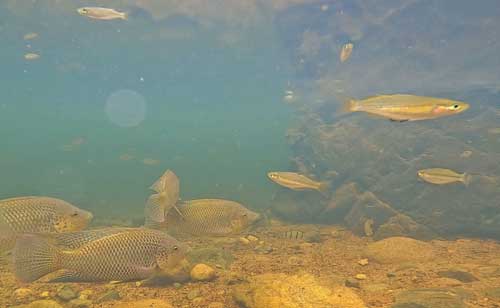
‘Tank tipping’ – that is, tipping out aquarium fish from tanks into nearby creeks and rivers – is one of the main ways that unwanted aquarium fish can become established in our waterways.
Many creeks and rivers that were previously free of invasive fish have undergone such a dramatic change that invasives are now the dominant fish species, putting a strain on the ecosystem and affecting native fish stocks.
To minimise the impact of tank tipping on our rivers and the fish that live in them:
- Don’t release invasive fish into our waterways
- Rehome unwanted aquarium fish with a friend, give away on social media or return all your unwanted ornamental fish to a local pet shop.

If you are a recreational fisho in north Queensland, chances are that you have either caught, seen or heard about invasive fish in your local waterways.
To stop the further spread of these species into adjacent waterways, anglers should dispose of invasive fish humanely and bury them at least 15m up the bank.
Tilapia are mouth-brooding cichlids that can grow larger than most native freshwater fish – 39cm in standard length and up to 1.1kg.
Even if the fish are euthanised, the young can still live in the mouth for some time, and this is the reason they need to be buried at least 15m away from a creek or wetland.
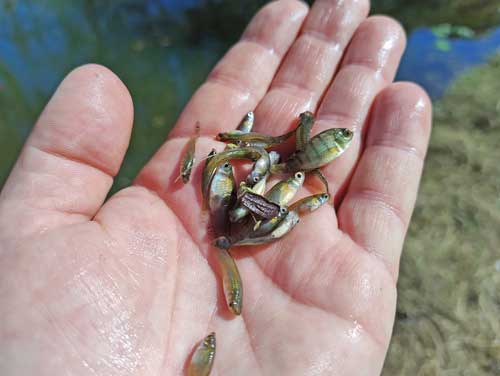
In the Townsville region, OzFish Unlimited conducts waterway monitoring weekly and encourages locals to volunteer and join in at any of the 13 sites that are visited on a quarterly basis.
Our focus is on monitoring native and invasive fish diversity, macroinvertebrates, water quality and riparian vegetation condition.
This is a great opportunity to get to know your local creeks and rivers, improve your fish identification skills and meet other local people in the region who are interested in looking after their waterways.
We also monitor waterways around Cairns, Ingham and the lower Burdekin for fish diversity, water quality and habitat condition.

In addition to this work, other activities people can become involved with to help in the removal of invasive fish species include:
- Volunteering your time in riverine and aquatic habitat improvement programs run by your local council or other non-government organisations
- Sign up for a pest fishing competition in your local area
- Contact your local freshwater fishing club and/or stocking group and get involved in stocking programs and habitat improvement.
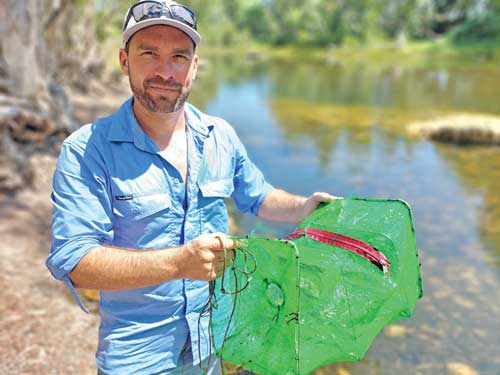
By learning to identify invasive fish species and removing them from our waterways, fishos can help ease the pressure on native species and contribute to an improved fishery for recreational and commercial activities.
Every little bit helps.
Adrian Macey
OzFish Unlimited
 Bush ‘n Beach Fishing Magazine Location reports & tips for fishing, boating, camping, kayaking, 4WDing in Queensland and Northern NSW
Bush ‘n Beach Fishing Magazine Location reports & tips for fishing, boating, camping, kayaking, 4WDing in Queensland and Northern NSW








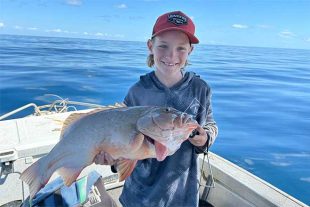
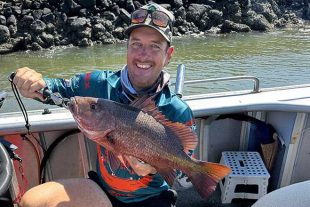
Tilapia maybe an invasive fish species, but we need to tell all the true facts about this fish. It in the top10 bracket of the most eaten fish in the world, it has nice white flesh which doesn’t have a muddy flavour to its flesh, if caught in dirty streams or rivers. Unlike some of our native fish.
It cooks well, steamed with condiments in alfoil with flakey flesh pieces, it pan fries nicely, whole or in fillets. Does not have a big fishy flavour
We should encourage people to catch and eat this fish, this would have some positives such as, population control, reduce damage to our waterways and increases in health and population of our native fish species. Aussies kids can enjoy the outdoors, catch a few tilapia fish and have a nice meal they caught themselves, good for our kids overall well being, the youth of today, are the future of our communities. Lest we forget.
Tilapia maybe an invasive fish species, but we need to tell all the true facts about this fish. It is in the top10 bracket of the most eaten fish in the world, it has nice white flesh which doesn’t have a muddy flavour when cooked, if caught in dirty streams or rivers, unlike some of our native fish.
It cooks well, steamed with condiments in alfoil with flakey flesh pieces, it pan fries nicely, whole or in fillets and doesn’t have a big fishy flavour
We should encourage people to catch and eat this fish, this would have some positives such as, population control, reduce damage to our waterways and increases in health and population of our native fish species. Aussie kids can enjoy the outdoors, catch a few tilapia fish and have a nice meal they caught themselves, good for our kids overall well being, the youth of today, are the future of our communities. Lest we forget.
Why don’t let any feral animal in to Australia in the first place. We have strong regulations going thru customs at the Airport.
Excellent magazine and full of contents